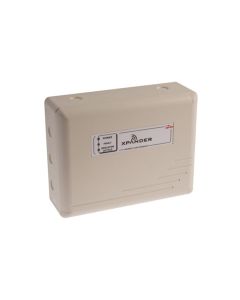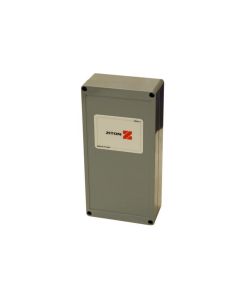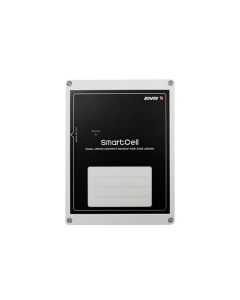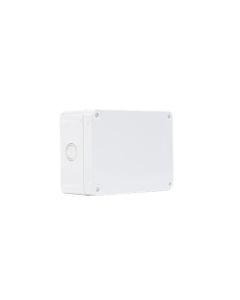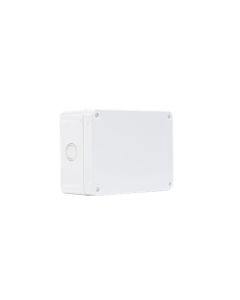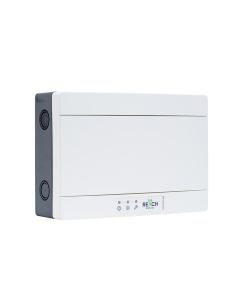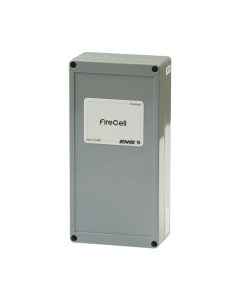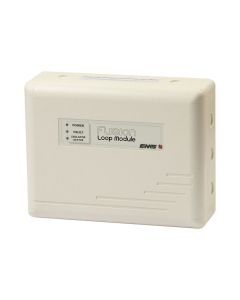We use cookies to make your experience better. To comply with the new e-Privacy directive, we need to ask for your consent to set the cookies. Learn more.
Over 30 Years Experience
We get it right, first time, every time!
Collect from our Trade Counter
Monday to Friday 8.30am - 5pm
Fast Delivery TIMES
Orders Dispatched Same Day*
Wireless Interfaces
Wireless interfaces at Firesense come from trusted manufacturers, ensuring compliance with UK and international safety standards. Designed for efficiency, flexibility, and reliability, these interfaces enhance the performance of wireless fire alarm systems, allowing for fully integrated fire safety solutions tailored to the needs of any building.
Wireless interfaces are a vital component of modern fire alarm systems, enabling seamless integration between wireless fire detection devices and auxiliary systems. These devices act as communication hubs, ensuring that fire alarms can trigger other critical safety measures such as emergency lighting, fire door closures, HVAC shutdowns, or sprinkler activation. By operating wirelessly, these interfaces eliminate the need for extensive cabling, simplifying installation while maintaining robust and reliable functionality. Wireless interfaces are particularly valuable in environments where traditional wiring is impractical, such as heritage buildings, temporary structures, or facilities with complex layouts.
Why Choose Firesense?
At Firesense, we are committed to providing reliable and compliant fire safety solutions that meet the unique needs of our clients. Our range of wireless interfaces includes products from leading manufacturers, ensuring high performance, durability, and compatibility with modern fire alarm systems. Our team of fire safety experts is here to guide you through every stage, from selecting the right interfaces to advising on installation and maintenance. Whether you are upgrading an existing system or installing a new one, we can provide technical support and guidance to help you through the process.
We also offer technical support service for wireless fire alarm systems, including help with troubleshooting, testing, and maintenance. Proper care of wireless interfaces is essential to ensure their continued reliability, and our team is always available to assist with your fire safety needs.
How Wireless Interfaces Work
Wireless interfaces use secure radio frequency (RF) communication to connect wireless fire alarm devices with auxiliary systems or control units. These interfaces enable fire alarm control panels to communicate with and activate external devices in the event of an alarm. For example, when a detector identifies smoke or heat, the wireless interface can send a signal to release fire doors, shut down ventilation systems, or activate emergency lighting.
Each wireless interface operates independently of traditional wired connections, relying on its own power source, typically long-life batteries, to maintain functionality. The fire alarm control panel continuously monitors the status of all connected interfaces, ensuring that any faults, signal issues, or low battery levels are promptly reported and addressed.
Benefits of Wireless Interfaces
Wireless interfaces offer numerous advantages, starting with their ability to simplify system design and installation. Unlike traditional systems that require separate wiring for every connected device, wireless interfaces use RF communication to eliminate the need for extensive cabling. This not only reduces installation time and costs but also minimises disruption to building operations, making wireless interfaces ideal for both new installations and retrofitting projects. Flexibility is another key advantage of wireless interfaces. Without the constraints of wiring, these devices can be installed wherever they are needed most, regardless of the building’s existing infrastructure. This adaptability makes them particularly valuable for dynamic environments where layouts or safety requirements may change, such as modular office spaces, event venues, or construction sites.
Wireless interfaces are also highly reliable, thanks to advanced RF communication technology. Secure, interference-free signals ensure that devices remain connected and responsive, even in challenging environments. Many wireless interfaces are equipped with fail-safes, such as redundant communication paths and tamper detection, to provide additional layers of security and functionality.
Applications for Wireless Interfaces
Wireless interfaces are suitable for a wide range of applications, enhancing the functionality of fire alarm systems across various building types and environments. In heritage buildings, wireless interfaces provide a non-invasive solution for integrating fire alarms with auxiliary systems, preserving the structure’s aesthetics and integrity. Similarly, in temporary structures like construction sites or event spaces, wireless interfaces enable the creation of a fully functional fire safety system that can be easily reconfigured or relocated as needed. In modern office buildings and schools, wireless interfaces facilitate the integration of fire alarms with other safety systems, such as access control or emergency lighting. This ensures a coordinated response to emergencies, improving evacuation efficiency and occupant safety. In healthcare facilities, wireless interfaces allow for quick installation and reliable operation without disrupting patient care or daily activities.
Types of Wireless Interfaces
Wireless interfaces come in various forms, each designed to address specific integration needs.
Relay Interfaces: Relay interfaces allow the fire alarm system to control external devices, such as HVAC systems, fire doors, or sprinklers. When triggered by the control panel, the relay interface sends a signal to activate or deactivate the connected device, ensuring a coordinated response to fire emergencies.
Door Release Interfaces: These interfaces enable the control panel to release magnetic fire door holders during an alarm activation, preventing the spread of smoke and flames while maintaining clear evacuation routes.
Emergency Lighting Interfaces: Wireless interfaces can also activate emergency lighting systems, ensuring that escape routes are well-lit and easily navigable even in low-visibility conditions.
HVAC Control Interfaces: These devices shut down ventilation and air conditioning systems during a fire, helping to contain smoke and reduce the spread of fire throughout the building.
Conclusion
Wireless interfaces are an integral part of modern fire alarm systems, providing the connectivity needed to integrate fire detection with auxiliary safety measures. By eliminating the need for extensive cabling, these devices simplify installation, reduce costs, and offer the flexibility to adapt to changing building layouts and safety requirements. From relay interfaces to emergency lighting and HVAC control, wireless interfaces enhance the functionality and reliability of fire alarm systems across a wide range of applications.
At Firesense, we are proud to offer a comprehensive range of wireless interfaces backed by expert guidance and exceptional customer service. Discover our selection today and let us help you create a wireless fire safety system that meets your needs. With Firesense, you can trust in the quality, performance, and reliability of every component, ensuring the safety of your building and its occupants.

